If we show a picture of the Kangaroo and ask which place on Earth we are, you will immediately answer Australia.
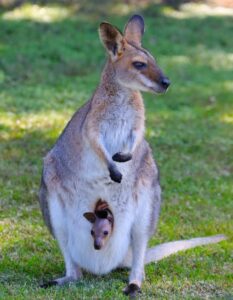
Australia’s connection with kangaroos is deeply rooted in the country’s natural history, culture, and identity. It stems from the fact that Kangaroos are mainly found in Australia and its neighboring island country, New Guinea.
Kangaroos are fascinating animals known for their distinctive hopping locomotion and unique characteristics. Here are some interesting facts about kangaroos:
Marsupials
Kangaroos are marsupials, which means they give birth to relatively undeveloped, live young, and carry and nurse their babies in a pouch. The pouch is where the young kangaroo, a joey, develops and grows after birth.
Marsupials are found primarily in Australasia and the Americas. Apart from Kangaroos, other marsupials include Koalas, Wallabies, Wombats, and Tasmanian devils in Australia and Opossums in the Americas.
Hopping and Leaping
Kangaroos are known for their incredible jumping and hopping abilities. These Australian animals are the only large animals that use hopping as their primary means of travel.
This energy-efficient method allows them to cover long distances at relatively high speeds. They can leap up to 3 times their body length in one jump and reach speeds of up to 40 miles per hour (64 kilometers per hour).
Physical Characteristics
Kangaroos have large, powerful hind legs, large feet, and a small head. These marsupials use their strong and muscular tails for balance when hopping. They can also use their tail as a fifth limb to help support their weight while dragging or walking.
Kangaroos don’t sweat and use their licking and panting to cool down in hot weather. This adaptation helps them conserve water in their arid habitats.
Kangaroos come in different species and sizes, including the Red Kangaroo, Eastern Grey Kangaroo, Western Grey Kangaroo, and the smaller Wallabies. The largest is the Red Kangaroo, which can stand over 6 feet tall and weigh 90 kg.
There are also the tree kangaroos, which inhabit the tropical rainforests of New Guinea and far northeastern Queensland.
In addition, it is a rare sight to find white Kangaroos. The white can be due to two conditions: albinism and leucism. Under both situations, the animal experiences partial loss of pigmentation on its skin and fur.
Food
Kangaroos are herbivores and primarily graze on grasses. They are adapted to extract maximum nutrition from low-quality, fibrous vegetation. Kangaroos have a specialized stomach with multiple chambers to aid in digestion.
Social Structure
Kangaroos are generally social animals and live in groups called mobs or troops. They have a complex social hierarchy, with dominant individuals and organized reproductive strategies. Living in mobs can protect some of the weaker members of the group.
Reproduction
Kangaroos have a unique reproductive system. After giving birth, a female kangaroo can mate and delay the development of her next embryo until conditions are favorable. This is called embryonic diapause, allowing kangaroos greater control over their reproduction in unpredictable environments.
After giving birth, a female kangaroo can mate and delay the development of her next embryo until conditions are favorable. This is called embryonic diapause, allowing kangaroos greater control over their reproduction in unpredictable environments.
When the joey is born, it is about the size of a thumb.
The joey will usually stay in the pouch for about nine months before starting to leave the pouch for small periods. Its mother usually feeds it until it reaches 18 months.
Threats
Kangaroos have a few natural predators in the wild, but their main threats are habitat loss, hunting, and vehicle collisions.
Nine out of ten animal collisions in Australia involve kangaroos. As a result, “kangaroo crossing” signs are commonplace in Australia. Some species, like the Red Kangaroo in Australia, are hunted for meat and hides.
Many kangaroo species are considered least concern or near threatened, but some are vulnerable or endangered. Conservation efforts are in place to protect their habitats and ensure their survival.
Symbol of Australia
Kangaroos are a cultural symbol of Australia and appear on various coins, stamps, and emblems representing Australia. They are prominently featured on the Australian coat of arms alongside the emu, and this pairing symbolizes progress since neither animal can move backward easily.
They are also a popular subject in Australian art, literature, and sports. The Australian national rugby team is known as the “Kangaroos.” This name reflects the strength, agility, and determination associated with kangaroos.
The phenomenon of Kangaroos in the Australian culture is not new; they have been featured in Aboriginal Dreamtime stories and art for thousands of years. These stories often depict kangaroos as important figures in creating the cultural narratives of Indigenous Australians.
Tourist Attraction
Kangaroos are a major attraction for tourists visiting Australia. Many travelers are eager to see these unique animals in their natural habitat or at conservation sanctuaries, making them an essential part of Australia’s tourism industry.
Kangaroos in Australia are often featured in wildlife sanctuaries, zoos, and conservation efforts, making them an essential part of their tourism industry. Places like Murramarang National Park in New South Wales, Bonorong Wildlife Sanctuary in Tasmania, Currumbin Wildlife Sanctuary in Queensland, Lucky Bay in Western Australia, Kangaroo Island in South Australia, and Australian Capital Territory are some the hotspots to find Kangaroos.
Wrapping Up
Kangaroos are remarkable animals with unique adaptations that have allowed them to thrive in the harsh Australian environment for millions of years. They are not just Australian icons; they are vital to the country’s natural ecosystem as they help maintain the balance of nature by grazing on vegetation and controlling plant growth.
They continue to be a source of wonder and pride for Australians and a subject of interest for people worldwide.
Watch this video to know more.
Watch this video to witness Australia’s natural wonders.

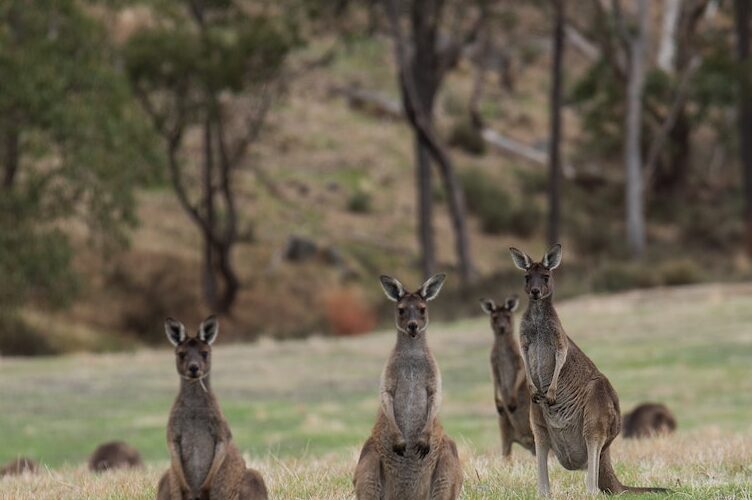
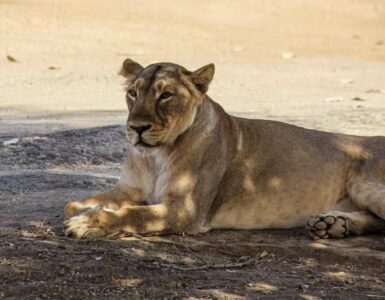
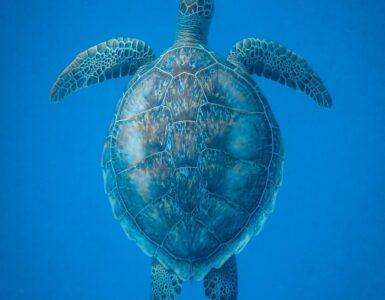
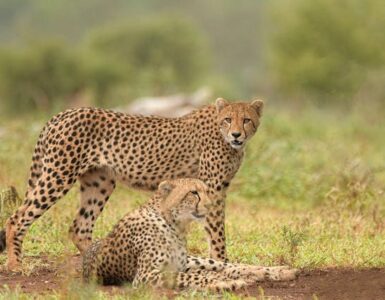

Add comment